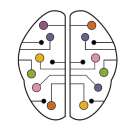MDMA and oxcarbazepine interaction
Is there a pharmacological interaction between MDMA and oxcarbazepine?
At 4I years old I was recently diagnosed as being bipolar. So my psychiatrist put me on Oxcarbazepine / Trileptal.My question is: How does Oxcarbazepine affect LSD, MDMA, psilocybin? is there any interaction? And, does it make it unsafe for me to use them?
Oxcarbazepine is not known to have any interactions with recreational psychedelics. However, it is essential to keep in mind that people who have bipolar disorder may be more sensitive to the adverse effects of drugs like LSD, MDMA, or psilocybin. This increased sensitivity is not due to drug interactions, but rather due to the underlying condition of bipolar disorder.
Bipolar disorder can manifest itself in different ways, such as cyclical manic and depressive phases, but this may not always be the case.
During depressive phases, the use of psychedelics may worsen mood symptoms. However, it is important to note that some individuals may become more aware of their symptoms and avoid using these substances altogether.
On the other hand, during manic phases, some people may exhibit normal behavior or have hypomanic episodes, while others may display clear signs of inappropriate behavior. As a result, it is crucial to have a thorough understanding of one’s specific case of bipolar disorder before deciding to use these substances.
In the event that an individual decides to use these substances, it is essential to be in the presence of trustworthy individuals who are familiar with the individual and can provide support.
MDMA is generally considered to be more manageable for most people, as it allows for better control over thoughts, feelings, and actions. However, it is worth noting that a depressive episode 24-48 hours after use is more commonly observed with MDMA than with psychedelics.
